Public Company Equity Transactions
Exercising stock options and selling stock for public employees.
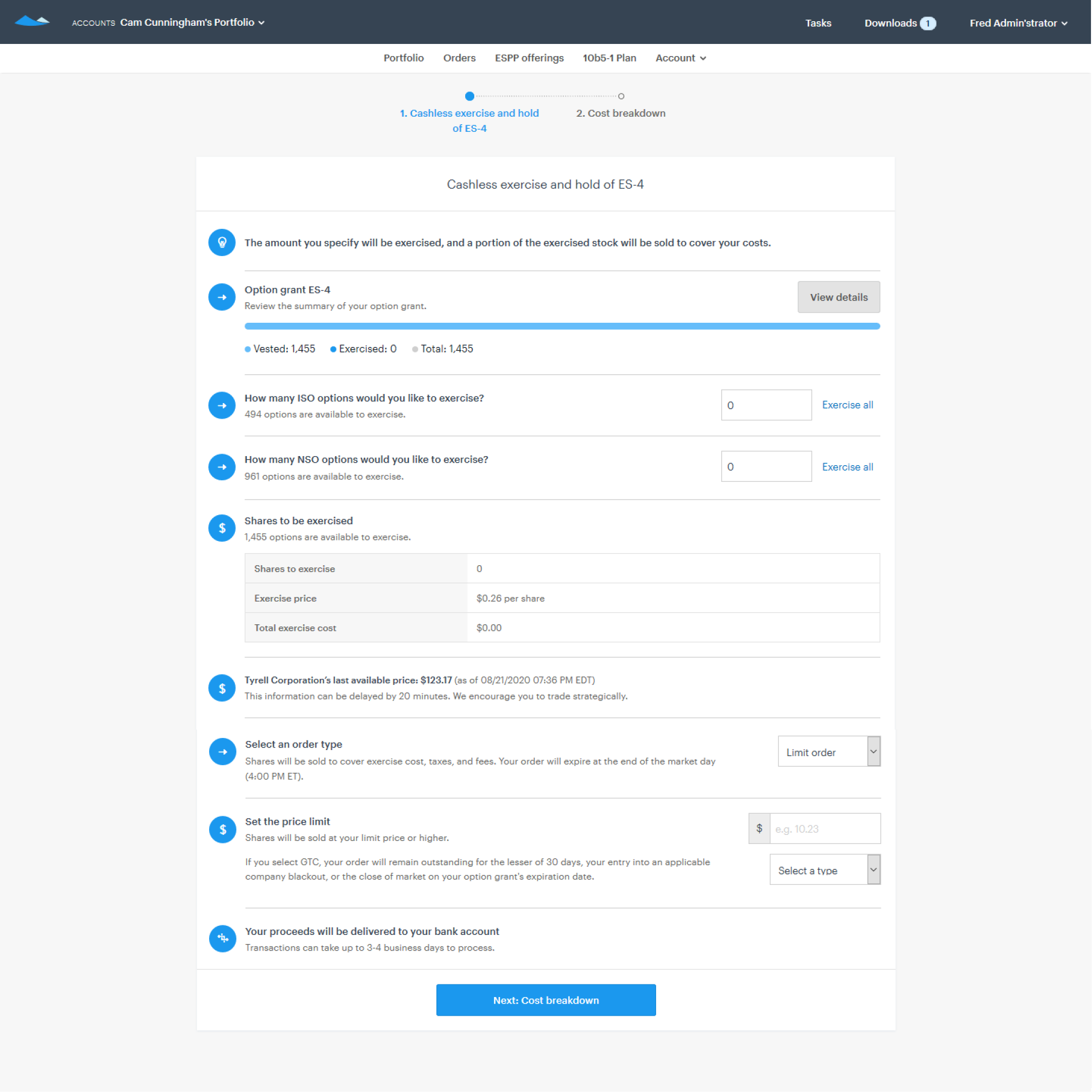
First step of a "Cashless exercise and hold" transaction.
Overview
Carta is a B2B SaaS company that helps companies and investors manage their cap tables, valuations, investments, and equity plans.
Some front-end code
Gathering product requirements
Wireframing
High-fidelity prototypes
User flows
2 Product Designers
4-5 Engineers
1 Product Manager
Legal and Compliance team
Design technology team
I joined the newly formed public markets team when I started at Carta. Our team's goal was to take some of our existing private company features and expand them to work with public companies. These features include tracking and managing employee equity (stocks and options), exercising stock options, and selling stocks.
Up to this point, Carta only supported private companies. Public company support was a high priority to prevent customer churn.
I designed the transaciton experience for stock option exercises and stock sales for public employees. With this functionality, we hoped to retain our large, enterprise company customers as they went public.
We worked quickly to mitigate the loss of customers.
Problem
Carta lacked support for public companies.
As private companies went public, and as the Carta platform could no longer support them, they would transition to other equity admin solutions, resulting in losses of large customers.
Solution
Support public companies by allowing their employees to exercise options and sell stock on Carta.
Process (highlights)
Challenge: Ambiguity
We didn't know much about our users aside from them being employees at large public companies. I assumed that most may know little to nothing about equity.
Given how constrained we were on time, it didn't feel feasible to recruit users and do formal user interviews and usability tests. Still, I squeezed in some time for some lightweight internal testing with a high-fidelity mockup.
I tested a high-fidelity prototype with Carta employees of varying levels of equity experience.
These tests helped inform my design decisions.
Challenge: Development Speed

Part of a mobile app concept that I created in a day that was demoed to key customers. Mobile support was a common customer request.
Our time constraint led to some tradeoffs in the design, namely the amount of time I could spend researching and iterating on designs before the team began implementation. Often, I would be designing side-by-side with our front-end engineers as they built the UI and we would iterate together.
I did my best to help the team move as fast as possible without sacrificing too much design quality. I even jumped in and did some front-end code to make sure things were polished!
Design
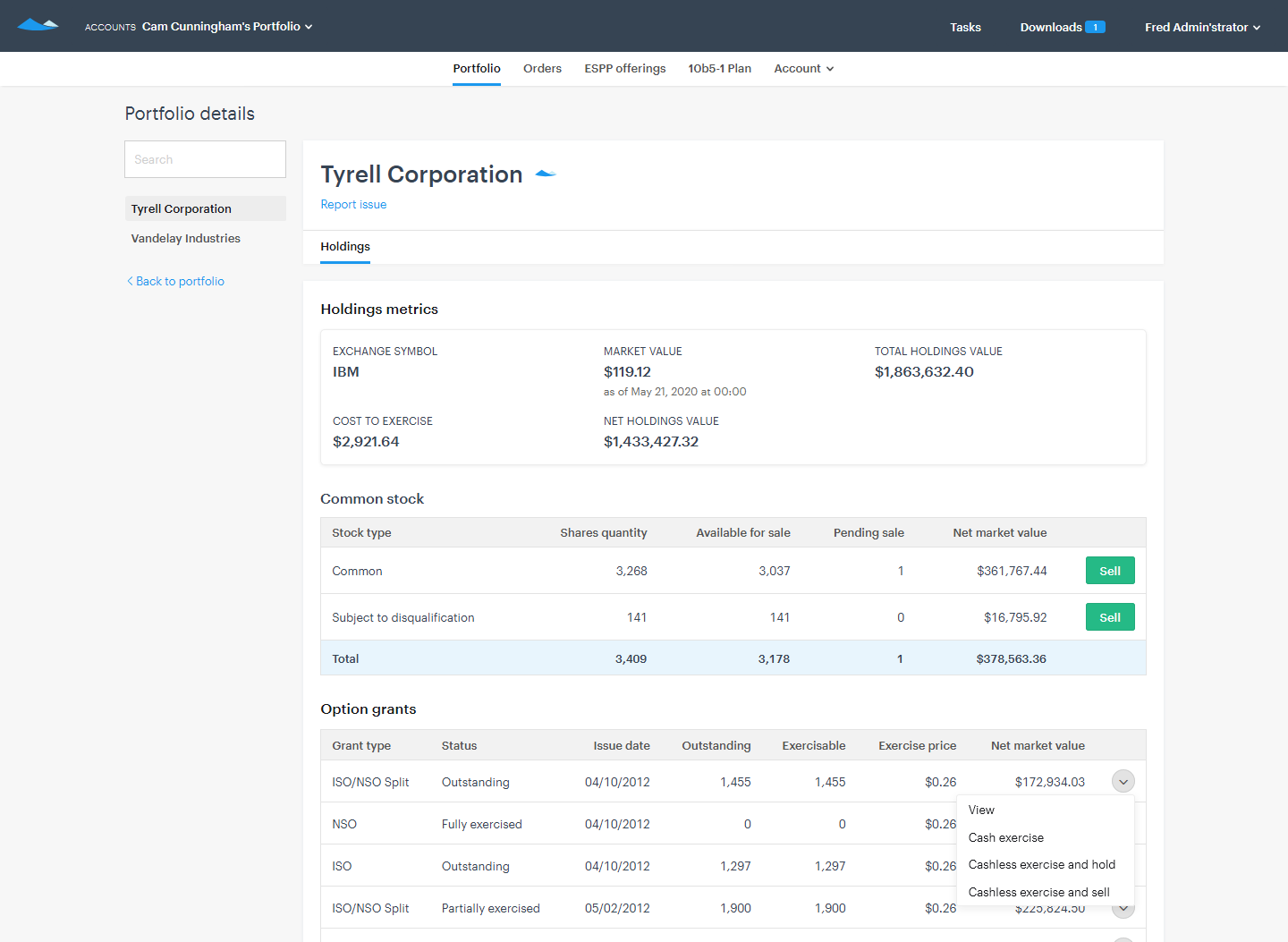
Employee portfolio. Here users can view their equity holdings and take actions, such as exercising their option grants and selling their stock.

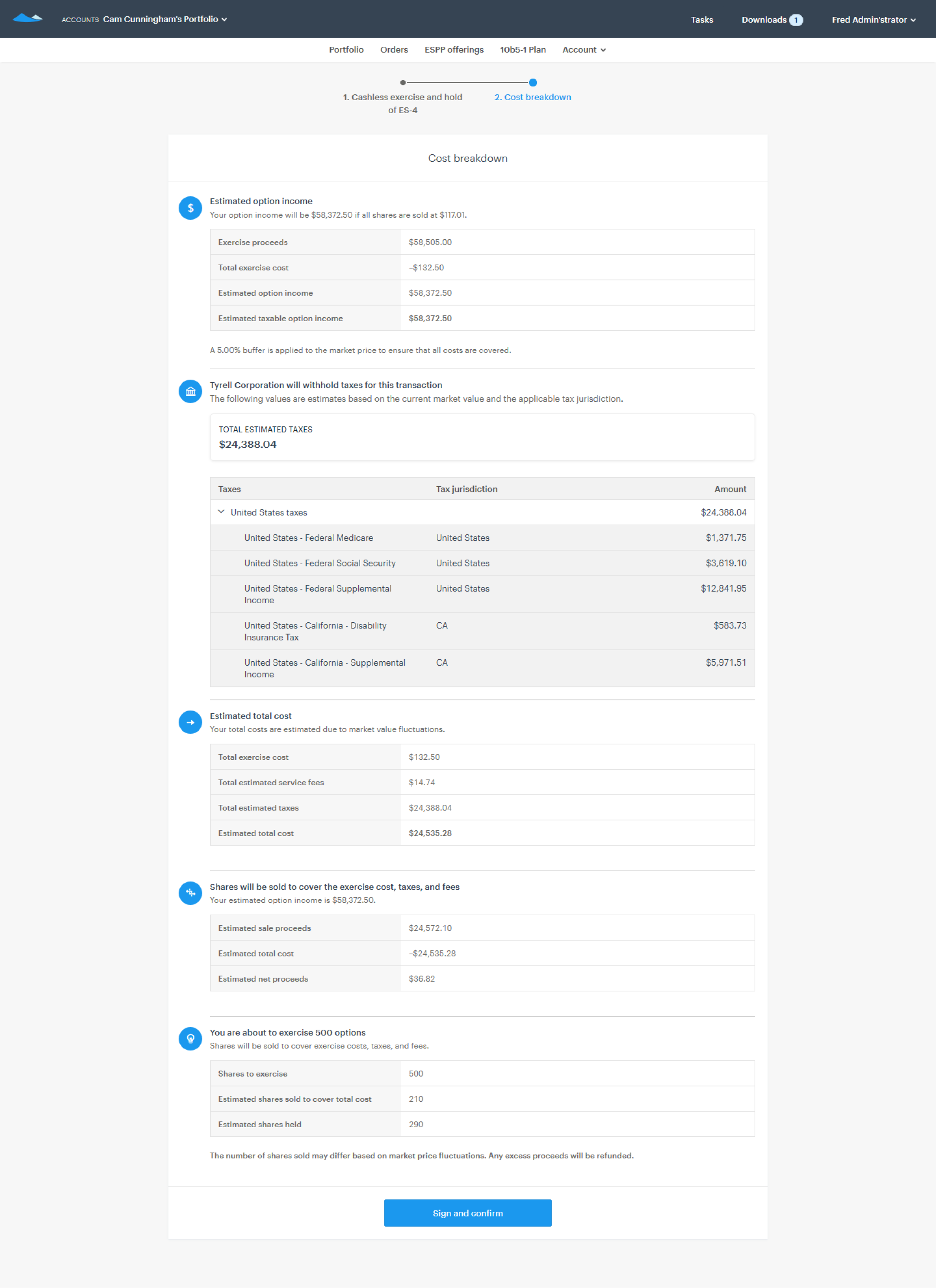
Transaction experience for "Cashless exercise and hold". Shares are sold to cover the exercise cost and the remaining shares are kept.
Design Decisions
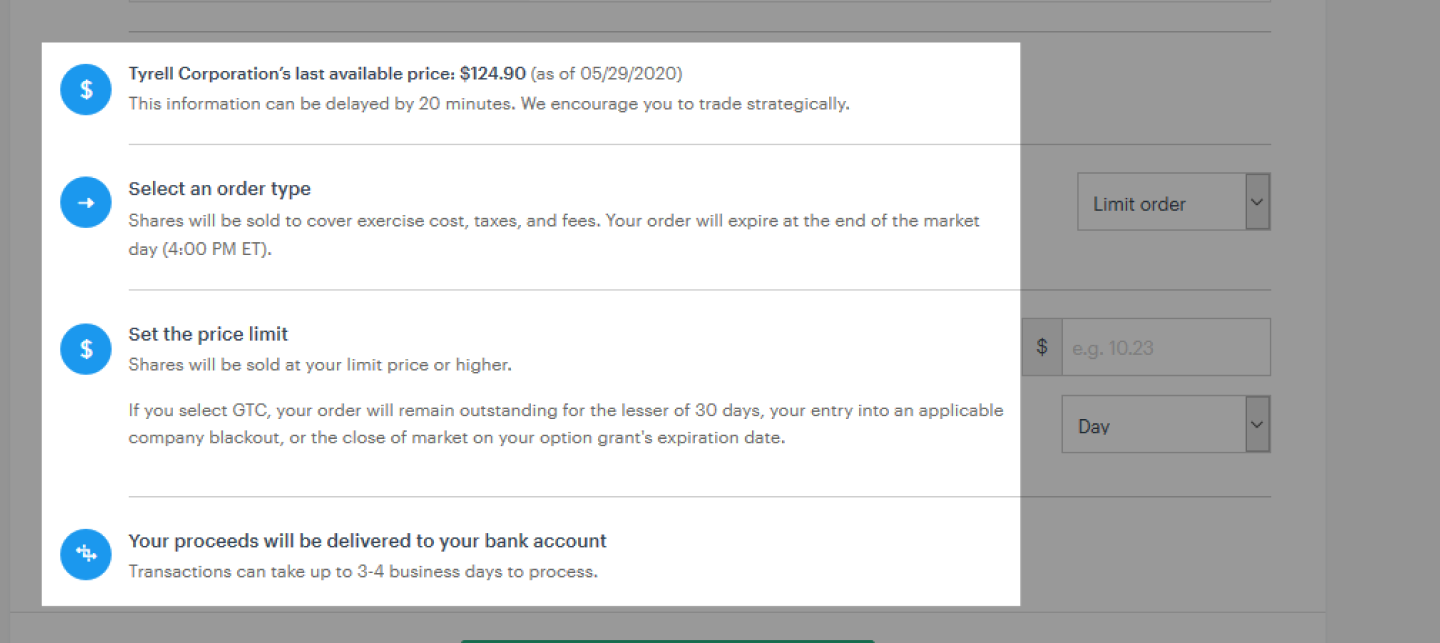
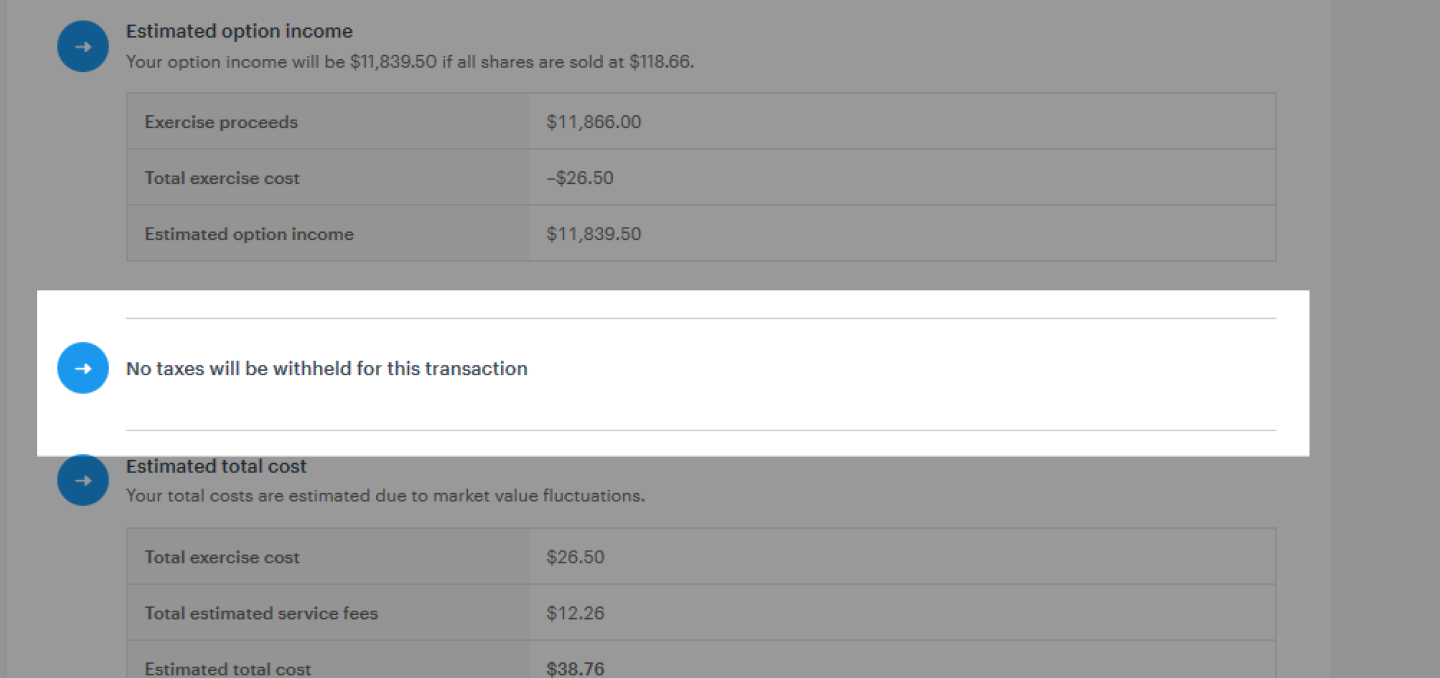
1. Dynamic, transaction-relevant information. I added useful information to help users better understand transactions. The different subsections displayed are dynamic and based on different factors, including equity-type and transaction type.
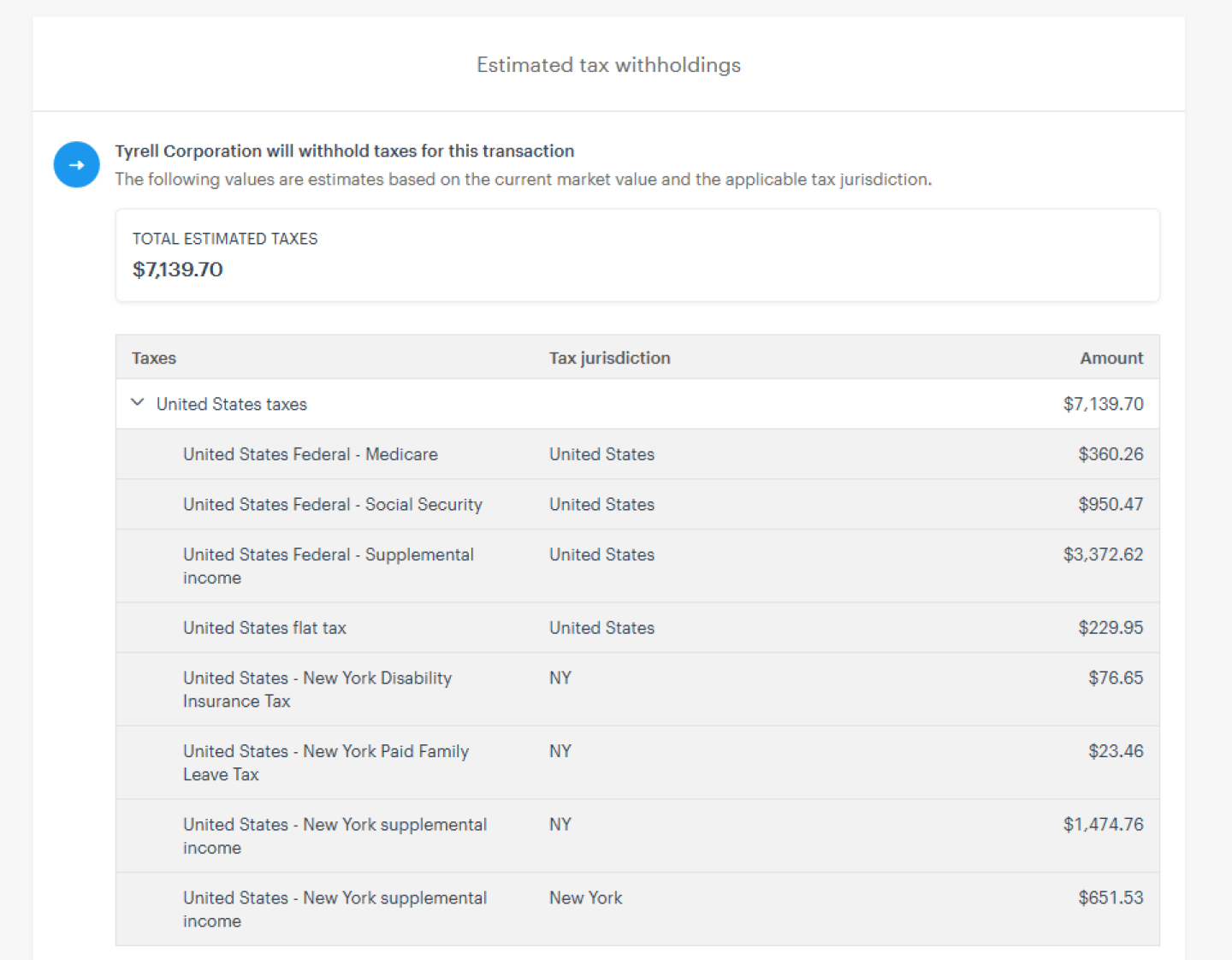
2. A tax breakdown for each transaction. Taxes can have a high impact on both exercises and sales. I included this detailed tax breakdown to help the user make a more informed decision regarding their transaction.
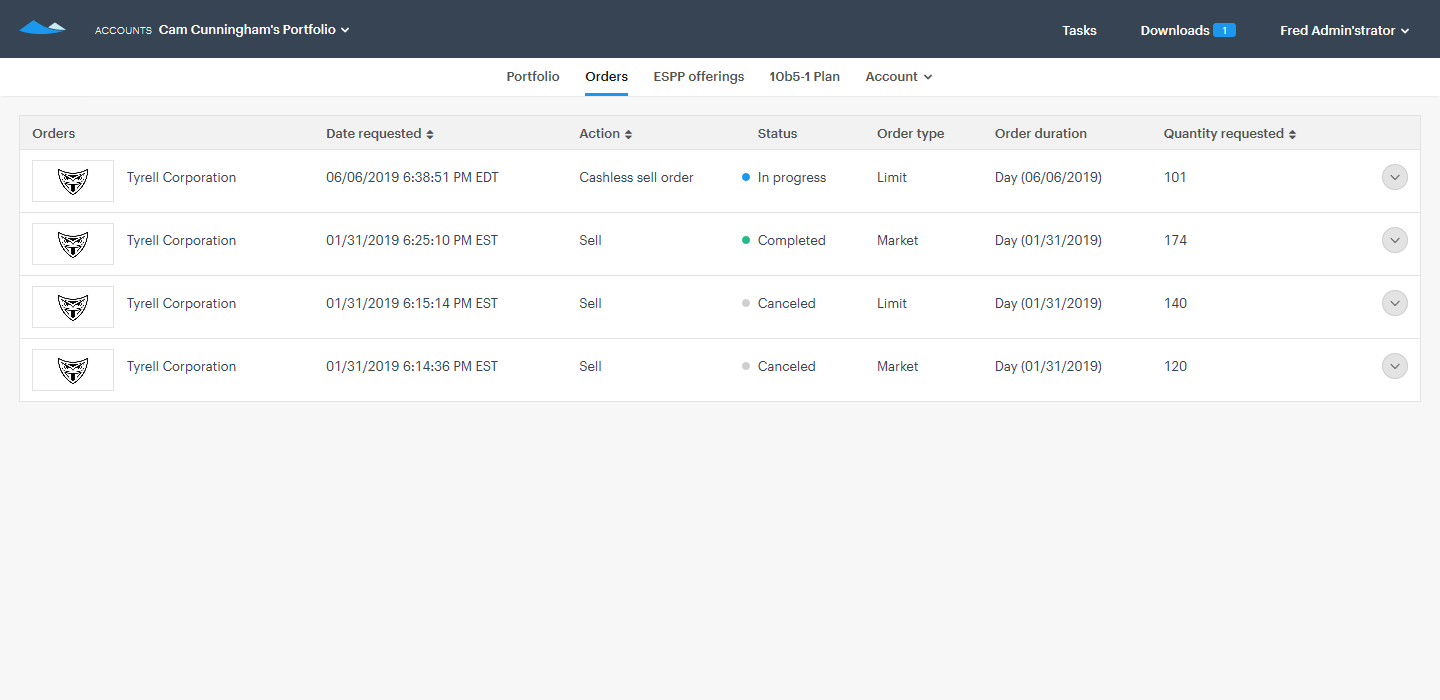
3. A transaction history where the user can view order status. These orders can take multiple days, up to a month, to complete. Displaying a transaction history and order statuses lets the user monitor their various orders.
Outcomes
• Gained 30 new public company customers.
• Over 9000 stock option exercises by public stakeholders.
• Maintained large private companies as customers.
• Users can now:
• Exercise their public stock options.
• Sell their public stock.
• View a portfolio of their equity.
• View the statuses and history of orders.
Reflection
In the end, we were able to keep some of our biggest enterprise customers and even gain some new ones. I was happy the team was able to deliver something given our strict timelines. I found that being proactive during this project was valuable in moving things along at a good pace.
What I would have done differently
Talk and test with external users. In hindsight, it would have been easy to find and test the product with our user type, which was simply any equity-holding public company employee. This additional work would have helped me to speed up decision-making around the design.
Get more value out of customer meetings. We met with our customers regularly, but we didn’t get much helpful information to inform development. I wish we had sought specific and appropriate feedback from our customers to better inform our decision-making.
Further design improvements
Improved visual design. We mostly relied on existing components with limited style choices, which left the UI lacking in some areas. The design could be improved through better visual design, for example, using typography more effectively to give the page a stronger visual hierarchy. Another potential improvement would be adding useful illustrations to support the descriptions of more complex concepts, such as a cashless exercise and sell transaction, instead of relying on words alone.
If time permitted, I would have created a more ideal design that deviated from our component library and outlined its behavior for a future update.